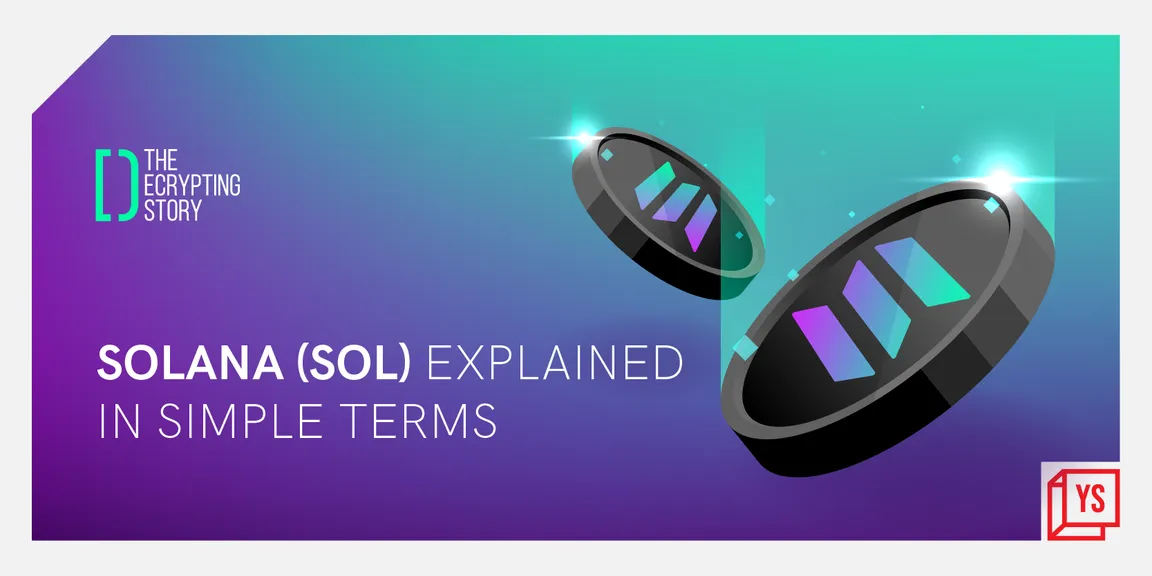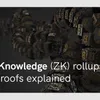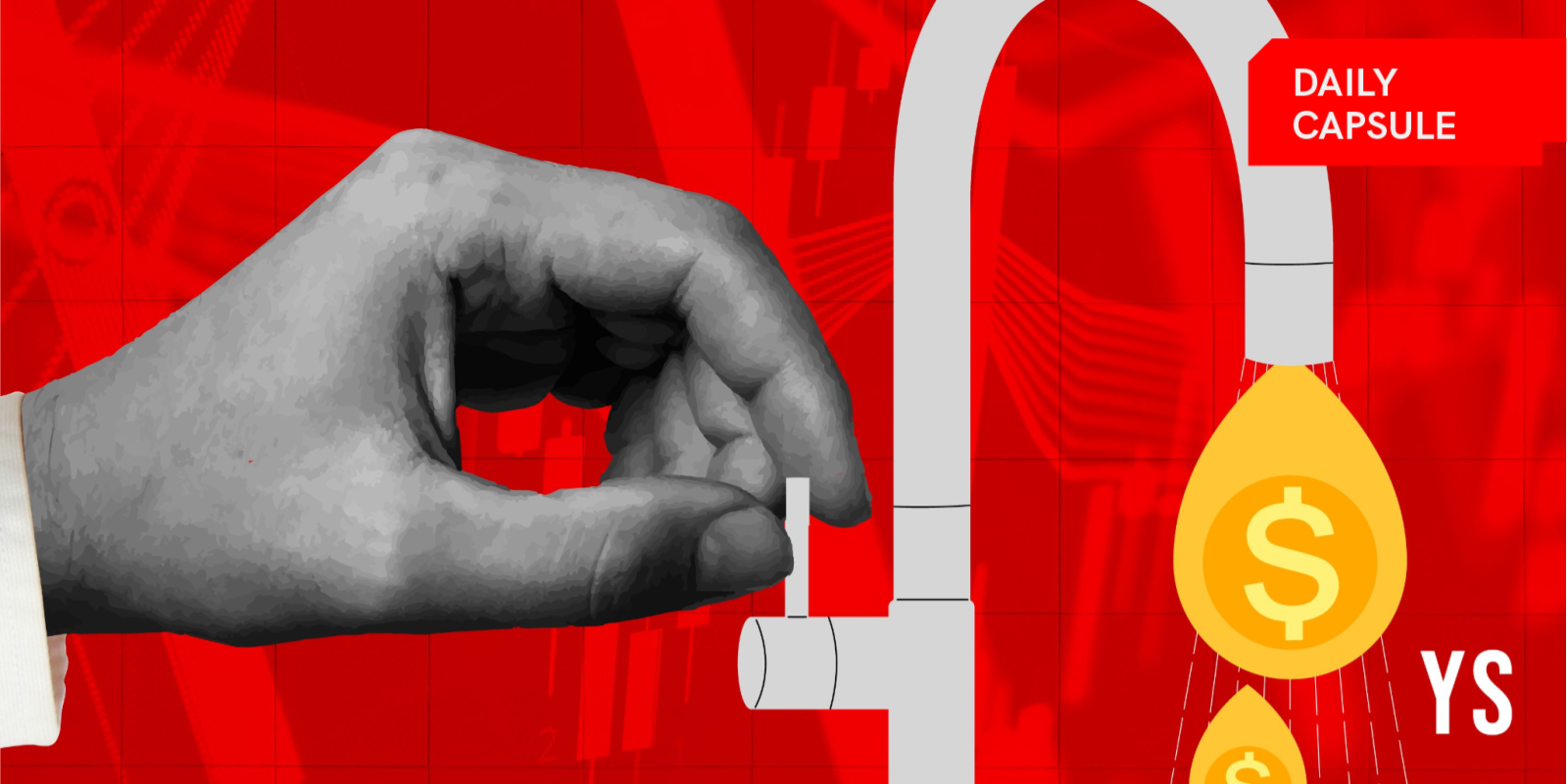What is Solana? SOL token, Proof of History, and key differences vs Ethereum explained
In 2021, Solana gained attention and adoption as it became one of the several ‘Ethereum killers’ to gain traction. Solana uses Proof of Stake (PoS) - a much faster and efficient consensus system - and a method known as Proof of History (PoH) to handle thousands of transactions per second.
(It may help to read our explainer pieces on Ethereum and blockchain consensus systems first to get a better understanding of how Solana works)
With its first mover advantage, Ethereum has been the industry-leading blockchain for building and running Decentralised Applications (DApps).
However, its slow transaction speeds and high gas fees (transaction fees) have spawned a set of rival blockchains looking to bring significantly faster transactions and higher throughput.
One such ‘Ethereum killer’ is Solana, an open-source, smart contract-enabled blockchain platform for hosting scalable DApps. It is built by Solana Labs and run by Solana Foundation.
On the Solana network, users pay transaction fees and interact with the ecosystem using SOL - the blockchain’s native cryptocurrency.
In 2021, on the back of Ethereum’s continuing challenges, Solana gained attention and adoption as it became one of the several Ethereum killers to gain traction.
As of late December 2021, the Solana blockchain reportedly has over 350 DApps running on it.
From January 2021 to January 2022, the price of SOL rose from $4.27 to $139.2 (it’s all-time-high was $259.96 on November 6, 2021). With a market cap of $43.68 billion (as of January 18, 2022), SOL is the seventh largest cryptocurrency by market capitalisation.

How Solana works
Bitcoin (BTC) and Ethereum (ETH) use Proof of Work (PoW) consensus systems, which require miners to solve complex puzzles to validate and generate new blocks. This is a time-consuming and energy-intensive process. Ethereum usually maxes out at processing 10-15 transactions per second (TPS).
Solana uses Proof of Stake (PoS) - a much faster and efficient consensus system - and a method known as Proof of History (PoH) to handle thousands of TPS.
PoH is a unique way of building a trustless system for keeping track of the order of transactions conducted on-chain.
Instead of bundling transactions into blocks with a single timestamp (like Bitcoin), Solana takes the output of a transaction and uses it as the input for the next hash. Thus, the order of events is now inbuilt into the hashed output.
This PoH method creates a lengthy chain of transactions that is clear and verifiable, allowing for reduction in the time spent for confirming the order of transactions.
PoH is not a consensus system, and so, Solana relies on PoS to achieve cheaper and faster transactions. When combined with PoH, it allows the protocol to select the next validator quickly and improve the overall efficiency of the chain.
Solana Co-founder Anatoly Yakovenko, who published a whitepaper in November 2017 describing how PoH works, noted that public blockchains then did not rely on a standardised clock.
As per the Solana whitepaper, the lack of a trusted source of time meant that when a message timestamp was used to accept or reject a message, there was no guarantee that every other participant in the network would make the exact same choice.
The paper adds that PoH gets past this hurdle, with every node in the network able to rely on the recorded passage of time in the ledger on the trustless basis that is key to blockchain functioning.
The Solana team has also developed other technical features to help Solana achieve better throughput. The team has claimed the blockchain can achieve 400ms block times and operate thousands of TPS - significantly higher than Bitcoins’s 10-minute block times and Ethereum’s 15-second block times.
Solana currently has over 1,000 validators, which makes it a fairly decentralised network.

Solana vs Ethereum
Both Solana and Ethereum feature smart contract capabilities, which are required for running DApps.
With PoH and PoS, Solana is the faster and more efficient blockchain. It can reportedly process 50,000 TPS, with average cost per transaction of $0.00025. Ethereum can handle less than 15 TPS, while its average transaction fees touched a record high of $70 in 2021.
Ethereum is currently moving towards implementing Ethereum 2.0 - a set of network upgrades that will see the platform move to PoS and also implement sharding (dividing the network into subsets of nodes) to achieve much faster transaction speeds and high efficiency.
Further, a number of Layer 2 solutions like Polygon’s PoS chain are making Ethereum transactions efficient by performing transactions on a secondary chain and posting bundles of confirmed transactions on the main Ethereum chain.
Ethereum has also been considered more reliable, owing to Solana’s network outage for over 17 hours on September 17, 2021. The outage was reportedly caused by a massive surge in transaction volumes (peaking at 400,000 TPS).
Compared to Ethereum, Solana’s adoption and network usage is still in its infancy. It remains to be seen if Solana will become more popular among developers and users and allow for many more use cases.
Edited by Teja Lele








